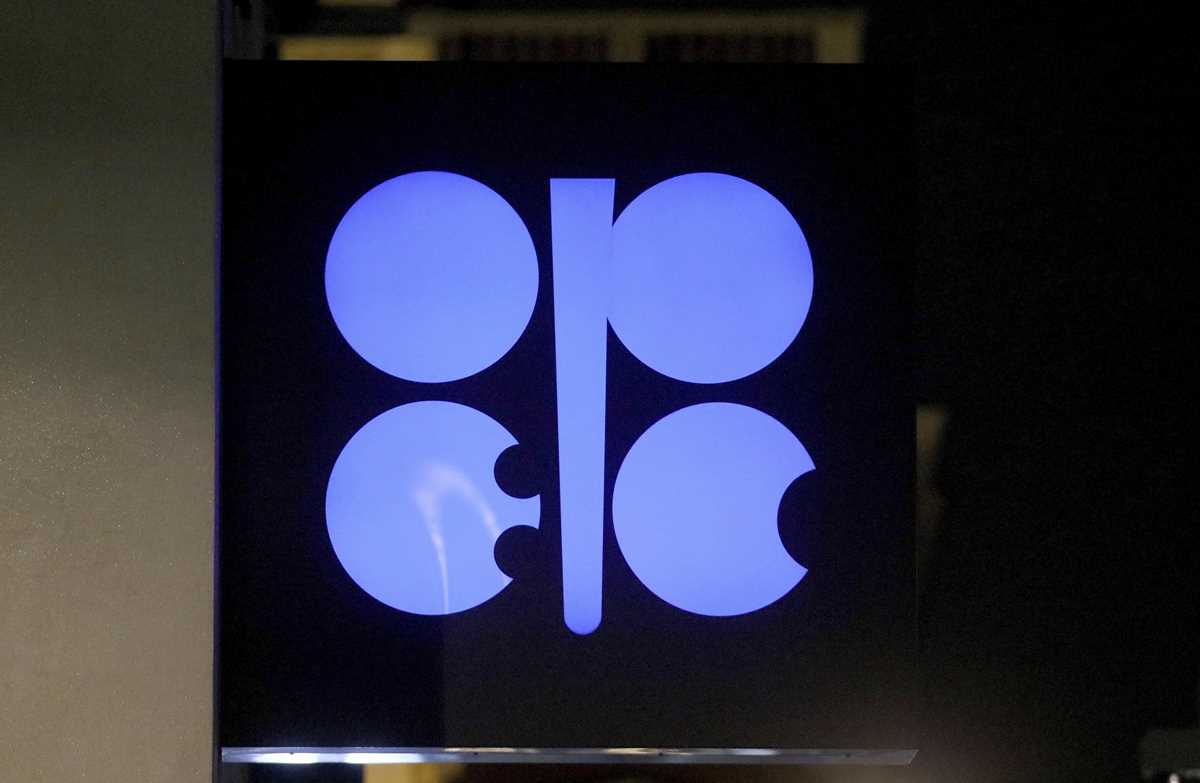 In this Dec. 19, 2019 file photo, the advertising label of the Organization of the Petroleum Exporting Countries, OPEC, shines at their headquarters in Vienna, Austria. Leaders of the OPEC cartel are meeting virtually to decide how much oil their countries should produce as the coronavirus stifles demand for fuel. They’re expected to extend production cuts into the new year in an effort to boost prices. (AP Photo/Ronald Zak, File)
In this Dec. 19, 2019 file photo, the advertising label of the Organization of the Petroleum Exporting Countries, OPEC, shines at their headquarters in Vienna, Austria. Leaders of the OPEC cartel are meeting virtually to decide how much oil their countries should produce as the coronavirus stifles demand for fuel. They’re expected to extend production cuts into the new year in an effort to boost prices. (AP Photo/Ronald Zak, File)FRANKFURT, Germany (AP) — OPEC and allied countries including Russia agreed Thursday to increase oil production by 500,000 barrels a day from January and will meet monthly to assess the situation, gingerly adding more crude to a market still suffering from the COVID-19 pandemic.
The decision followed days of wrangling over whether to increase output early next year at all after the pandemic sapped demand for energy and clouded the outlook for the industry.
The OPEC members and a group of allies had made deep cuts in production last year to support prices as the pandemic sharply reduced demand for fuel. Analysts said simply extending the 7.7 million barrels per day in cuts was the course preferred by Saudi Arabia, which takes a leadership role among member countries, and also by Russia, the biggest of the non-members who have been cooperating with OPEC.
But they faced pushback from countries including the United Arab Emirates, which opposed the extension and wanted countries that had overproduced their quotas to make compensatory cuts.
Russian Deputy Prime Minister Alexander Novak said that participants agreed that 2 million barrels a day needed to return to the market “at some point” but that any increase would be gradual. The monthly meetings could decide in either direction, up or down, he said.
Saudi Arabia’s Energy Minister Abdulaziz bin Salman alluded to hopes that the recent wave of lockdown restrictions on businesses “are not hampering demand as in the first wave” but cautioned that “the jury is still out” and that “we need to be cautious” about ramping up production.
He said that at the monthly meetings “we could tweak upward, we could tweak downward, we could stay put... We elected to take the cautious approach."
Oil producing countries face a dilemma: producing more increases their revenues but could send prices lower, especially given still-weak demand and uncertain prospects for the speed and timing of a post-pandemic economic recovery.
Energy forecasters around the world, including those employed by OPEC, have been lowering their forecasts about how much oil will be needed. Airline travel, for example, has been dramatically reduced, and is not expected to rebound for several years.
The U.S. benchmark for oil traded at $45.74 per barrel Thursday on the New York Mercantile Exchange, up 46 cents on the day. That is down from around $63 at the start of 2020. Gasoline prices for U.S. motorists have fallen during the pandemic to below $2 in some parts of the country, according to the U.S. Energy Information Administration; the national average was $2.12 as of Nov. 30.
Before you make your next trade, you'll want to hear this.
MarketBeat keeps track of Wall Street's top-rated and best performing research analysts and the stocks they recommend to their clients on a daily basis.
Our team has identified the five stocks that top analysts are quietly whispering to their clients to buy now before the broader market catches on... and none of the big name stocks were on the list.
They believe these five stocks are the five best companies for investors to buy now...
See The Five Stocks Here
Click the link below and we'll send you MarketBeat's guide to pot stock investing and which pot companies show the most promise.
Get This Free Report